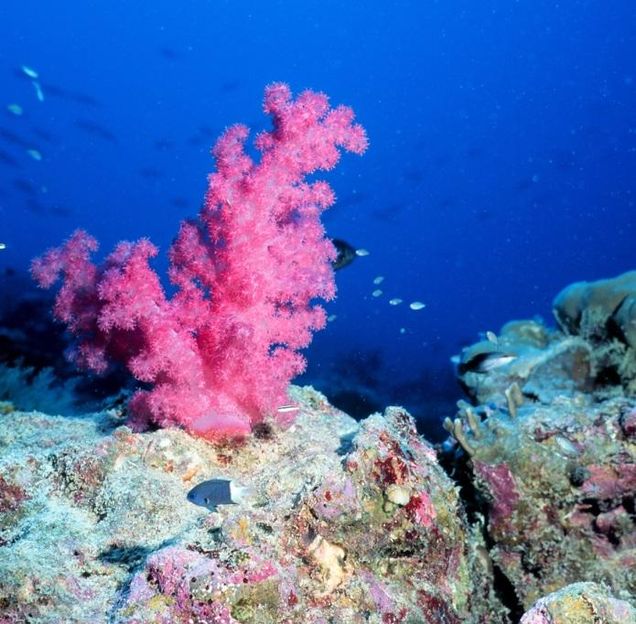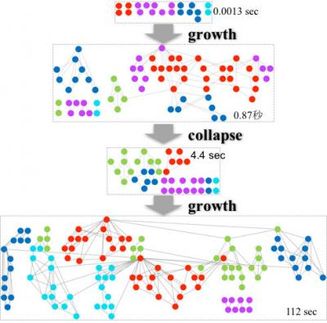Greenhouse gases' millennia-long ocean legacy
Advertisement
Continuing current carbon dioxide (CO2) emission trends throughout this century and beyond would leave a legacy of heat and acidity in the deep ocean. These changes would linger even if the atmospheric carbon dioxide concentration were to be restored to pre-industrial levels at some point in the future, according to an international team including Carnegie's Ken Caldeira. This is due to the tremendous inertia of the ocean system.

Coral near Tarawa, Kiribati.
NOAA photo library / Linda Wade
Greenhouse gases emitted by human activities not only cause rapid warming of the seas, but also an unprecedented rate of ocean acidification.
Some experts propose that climate and chemical damage due to high levels of greenhouse gases could be avoided by removing active carbon dioxide from the atmosphere. One idea is that fast-growing trees such as poplars, which consume a great deal of carbon dioxide during growth, could be farmed and then burned in bioenergy plants where their carbon dioxide would captured and stored underground instead of released back into the atmosphere. However, none of the proposed removal-and-storage strategies have been proven at an industrial scale yet, and ideas such as poplar farming would have to be carefully balanced against land use for food production.
"Geoengineering measures are currently being debated as a kind of last resort to avoid dangerous climate change – either in the case that policymakers find no agreement to cut CO2 emissions, or to delay the transformation of our energy systems," said lead-author Sabine Mathesius from GEOMAR Helmholtz Centre for Ocean Research Kiel and the Potsdam Institute for Climate Impact Research (PIK). "However, looking at the oceans we see that this approach carries great risks."
"If we overspend our carbon dioxide emission budget now, can we make up for it by paying back a carbon dioxide debt later?" asked Caldeira, who worked on this issue during a research stay at PIK. "Can later carbon dioxide removal from the atmosphere offset today's emissions?"
The team conducted a computer experiment and simulated different rates of carbon dioxide extraction from the atmosphere. One of these rates, 22 billion tons per year, would remove carbon dioxide at slightly more than half current emission rates. Another was the probably unfeasible rate of more than 90 billion tons per year, which is more than two times today's yearly emissions.
"Interestingly, it turns out that after business-as-usual until 2150, even taking such enormous amounts of carbon dioxide from the atmosphere would not help life that exists deep in the ocean very much. After large-scale ocean circulation has transported acidified water to great depths, it is out of reach for many centuries, no matter how much carbon dioxide is removed from the atmosphere," Caldeira said.
The scientists' model also looked at increasing temperatures and decreasing concentrations of dissolved oxygen in the sea. Oxygen is, of course, vital for many creatures. The warming reduces ocean circulation, harming nutrient transport. Together with acidification, these changes put heavy pressures on marine life. Earlier in Earth's history, such changes have led to mass extinctions. However, the combined effect of all three factors has not yet been fully understood.
"In the deep ocean, the chemical echo of this century's CO2 pollution will reverberate for thousands of years," said co-author John Schellnhuber, director of PIK. "If we do not implement emissions reductions measures in line with the 2° Celsius target in time, we will not be able to preserve ocean life as we know it."


























































